Ethereum has completed a long-awaited upgrade to its system in a move expected to slash its energy costs and intended to prepare the ground for more use of crypto technology in mainstream finance.
The upgrade, known in the industry as the “Merge”, which changes how new transactions are verified on the Ethereum blockchain, completed on early Thursday, said co-founder Vitalik Buterin.
Ethereum powers large swaths of the Web3 world, which includes applications such as digital collectibles and decentralised finance systems.
The milestone, which has been promised by developers for many years, was hailed as one of the most significant moments in crypto’s short history by fans, who planned “Merge parties” in cities around the world and followed live-streamed watch parties on social media.
“This is the first step in Ethereum’s big journey towards being a very mature system. There are still steps left to go,” Buterin told developers.
The Merge marked a high-stakes test for the crypto sector after the crash in token prices this spring wiped $2tn off the value of digital assets and shook faith in the market.
Changing the architecture that underpins the $200bn ether cryptocurrency, the flagship token on the Ethereum blockchain, and tens of billions more of related assets and applications is fraught with risks from technical hiccups to squabbles among participants in the decentralised network, even after the Merge was completed.
Its backers expect a successful Merge will boost confidence in Ethereum, launched in 2015 by Russian-Canadian programmer Buterin, and the multitude of tokens and projects that run on its blockchain, as well as blunt criticism over its energy consumption.
However, Ethereum developers said they would need to monitor the network over the coming hours and days to ensure the upgrade is working smoothly.
“It is a complicated task,” said Edouard Hindi, chief investment officer at crypto hedge fund Tyr Capital. “One forgotten fine tune . . . could lead to a lot of volatility, and the market is in a panicky mood.”
The Merge represents just one step in a plan sketched out by Ethereum developers to overcome limits on the network’s capacity, which are seen as a major hurdle to achieving mainstream adoption of decentralised finance.
“[The Merge] solves one issue but it does not solve a heck of a lot of other issues,” said Lars Seier Christensen, co-founder of Saxo Bank who now runs a blockchain project called Concordium.
Ethereum, like bitcoin, has so far relied on network participants solving complex maths problems to validate new blocks, a process called proof of work. Ethereum’s energy consumption was similar to that of Finland.
The Merge refers to the moment when the existing Ethereum blockchain linked with a new network where transactions are validated by a group of individuals and corporations that have staked their own tokens as collateral for the security of the network, a system called proof of stake.
The Ethereum Foundation estimates that replacing proof of work will cut the blockchain’s energy consumption by about 99.95 per cent. It will also eliminate the need for Ethereum miners, companies that make money from validating new blocks via proof of work.
Anticipation of the Merge has helped boost the price of ether, which has risen about 75 per cent from its low point in June. Ether has gained ground against bitcoin, which has recovered just 15 per cent over the same period.
However, the years-long effort to complete the upgrade underscored the difficulty of making improvements to the Ethereum blockchain. Transactions on the network are still hampered by slow speed and high costs, which critics have said limits the system’s ability to grow.
Hindi said the Merge was “just one step in the right direction. There are three or four more steps. It is a two- or three-year process. It’s a big, big plan that is being rolled out and we will have a lot of surprises on the way, good and bad ones.”











